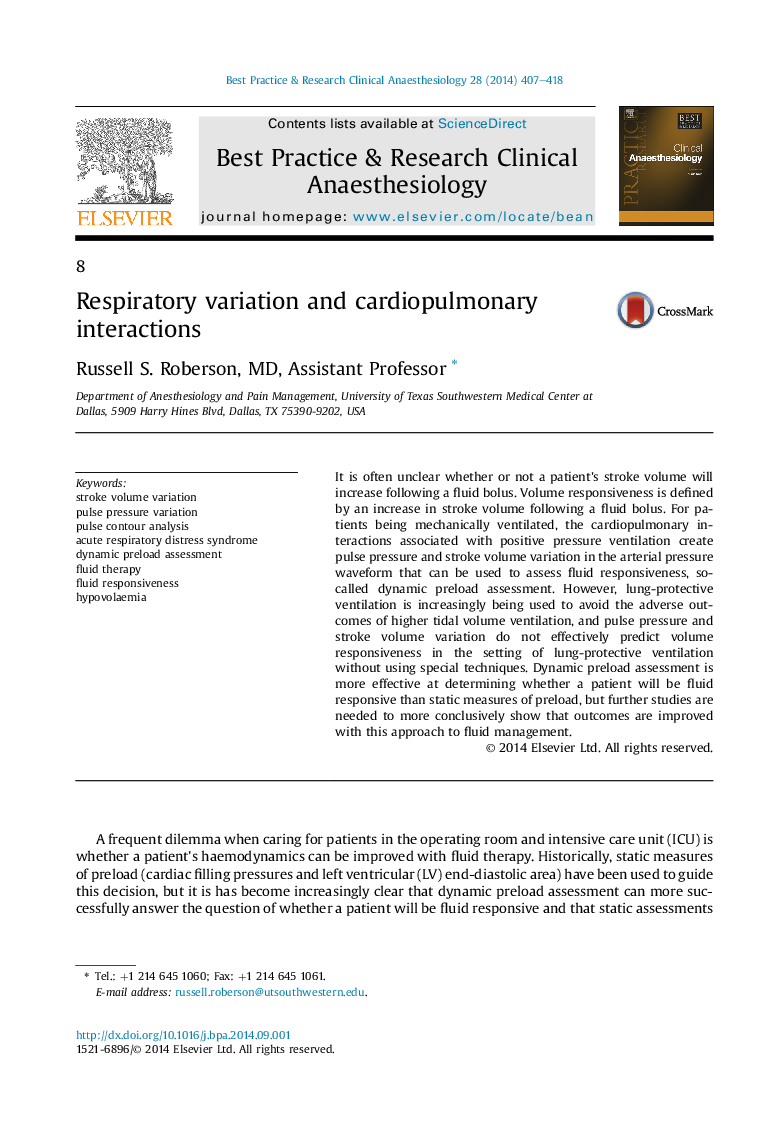| کد مقاله | کد نشریه | سال انتشار | مقاله انگلیسی | نسخه تمام متن |
|---|---|---|---|---|
| 2748391 | 1149186 | 2014 | 12 صفحه PDF | دانلود رایگان |
It is often unclear whether or not a patient's stroke volume will increase following a fluid bolus. Volume responsiveness is defined by an increase in stroke volume following a fluid bolus. For patients being mechanically ventilated, the cardiopulmonary interactions associated with positive pressure ventilation create pulse pressure and stroke volume variation in the arterial pressure waveform that can be used to assess fluid responsiveness, so-called dynamic preload assessment. However, lung-protective ventilation is increasingly being used to avoid the adverse outcomes of higher tidal volume ventilation, and pulse pressure and stroke volume variation do not effectively predict volume responsiveness in the setting of lung-protective ventilation without using special techniques. Dynamic preload assessment is more effective at determining whether a patient will be fluid responsive than static measures of preload, but further studies are needed to more conclusively show that outcomes are improved with this approach to fluid management.
Journal: Best Practice & Research Clinical Anaesthesiology - Volume 28, Issue 4, December 2014, Pages 407–418
